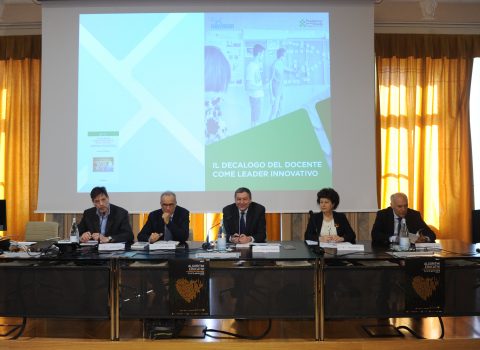
Technologies in education: how to go to the top
A report by Nesta Italia and Compagnia di San Paolo discloses engaging experiences on the link between education and technology. The publication is full of case studies useful for designing new learning processes
How to get the most out of technology at school? How many educators and instructors have asked themselves this question? Here the excellent report recently published by Nesta Italia, in collaboration with Compagnia di San Paolo, presents an articulated and in-depth answer for those who want to roll up their sleeves and get involved. Without getting into the debate about teaching methods – this is not the right place – what really matters is that these research, data collection and analysis work allows us not only to open up a new perspective on the relationship between technology, education, and I would add effectiveness of the process of content transmission and sharing, but it also allows to explore dozens of case studies, accurately reported in the appendix by links and referred to organizations and educational contexts of many areas of the world. Precisely from this rich list nine cases were selected: they give an account of experiences from Italy, UK and rest of the world.
Each case was discussed and displayed following four factors:
- scale (let’s try to think of it in relation to a project, but also to a process or, even better, to an educational platform),
- teachers (role and change),
- context (the thin weft between school and society),
- complexity (to be imagined as a resource that allows us to plot unique, original relationships with different players).
Scale, in particular, is one of the factors that opens up to reflections about the impact technology can have on education, then suggesting implications on the school system (macro dimension) and the single student (micro dimension). The first factor, as well as explored in the report, makes it possible ask ourselves whether and how a benefit derived from the use of technology can be perceived (in a certain sense, received) in the same way in different places. It is about a not insignificant matter if we really take into account the remaining factors involved.
Again, in relation to the case studies, it is worth noticing that among its meaningful features, one of the most interesting is the offer of a set of suggestions without claiming to have the solution to overcome all the obstacles or the dynamics that education work using technology can generate. Considering the case studies and the results of the methodological choices (above all workshops and interviews), it appears that one of the most promising paths to follow is the one of collaboration: a series of virtuous and non-virtual relationships capable of generating pedagogical effectiveness. Collaboration, which is also a very evocative term and a still too little operational one, should be directed toward all the stages that gradually involve the choice of using technology to teach: design, experimentation and finally actual adoption of the chosen technological tool.
This report, edited by Toby Baker, Simona Bielli and Luca Tricarico, is a very stimulating tool to discover, even for those wishing to advance directly into the case studies section; they are one more fascinating than the last, scattered between Europe and the rest of the world and stemmed from experiences in very different educational and social contexts. To easily explore the cases, readers may rely on icons intended as “indicators”, which the authors added to each case with the aim to quickly spot the most “interesting features”. They are: teachers, networks, drivers for social action, non-governmental initiative, scale. These factors are worth mentioning, to think about the way and the levels in which they can interact allowing in fact a dynamic and an effective practice for the implementation of technologies in schools.
